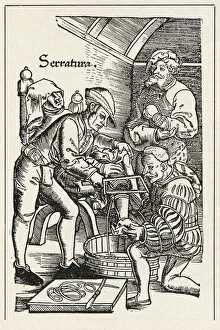Amputating Collection
Amputating: A Glimpse into the History of Surgical Intervention In the annals of medical history
All Professionally Made to Order for Quick Shipping
Amputating: A Glimpse into the History of Surgical Intervention In the annals of medical history, amputation stands as a testament to both human resilience and the ever-evolving field of surgery. From ancient times to more recent centuries, this procedure has played a significant role in saving lives and alleviating suffering. One haunting tale takes us back to 1930 when an Englishwoman named martyred by the Chinese became a symbol of unwavering courage. The details surrounding her story remain shrouded in mystery, captured only through an enigmatic depiction created by an unknown artist. Engravings depicting amputations offer glimpses into the surgical practices that prevailed throughout different eras. An engraving titled "An Amputation" showcases the meticulousness with which surgeons approached such procedures, highlighting their skillful use of instruments like amputation saws. The power of faith is encapsulated in "The Miracle of St. Cosmas, " an oil painting on panel where divine intervention seems to guide a surgeon's hand during an amputation. This artwork serves as a reminder that even amidst pain and loss, miracles can unfold. Exploring further back in time, we encounter medieval scenes portrayed through tempera on panel paintings—a vivid portrayal capturing not only surgical techniques but also societal attitudes towards healing and suffering. Hans von Gersdorff's illustrated work from c. 1540 reveals how knowledge was disseminated during those times; his color woodblock print provides valuable insights into early modern medicine's understanding and approach to amputations. Fast forward to Georgian England—caricatures depict surgeons at work with humor-laden precision while performing amputations—an artistic commentary on society's fascination with these skilled practitioners who held lives within their hands. Thomas Rowlandson's creation from February 17, 1786, immortalizes another momentous event—an actual historical occurrence wherein someone underwent an amputation on that very day.







